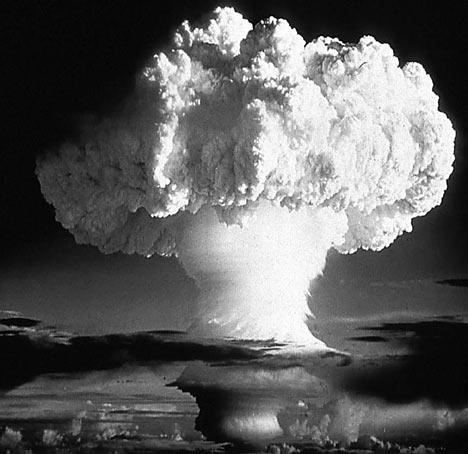The gut-wrenching documentary “The Bomb” showed images of nuclear weapons and their test subjects at Union South’s Marquee Tuesday night. The documentary was followed by a talkback with filmmaker Smriti Keshari, Rhode Island School of Design member Tom Weis and Bulletin of the Atomic Scientists president Rachel Bronson.
The talkback highlighted the opinions of all three speakers, who all want to raise awareness of the destructive capabilities of nuclear weapons.
Keshari explained that when traveling and showing her documentary, she asks people how many nuclear weapons they think exist. Keshari said some people think none, while others guess higher — nobody guesses around 15,000, the correct answer. There are about that many nuclear weapons spread across the world — many of them out of sight or buried underground.
“It’s so hard for people to have an emotional connection to something they can’t see,” Keshari said.
The documentary started by showing pictures of armies perfectly in sync from all over the world. It soon transitioned to depict the failure of bombs — another point the three speakers touched on with great seriousness. They claimed that the reality of nuclear bombs is that they are designed to cultivate mass death.
Bronson hopes legislation will take a role in the usage of nuclear bombs. She said it is critical to the state of our planet and for U.S. national security.
“The time really is right now,” Bronson said.
Further in the show, video and photographic footage of test animals were shown being tied and subjected to test bombs. The footage was quite graphic, and the audience watched the animals wither away as they were burned. Animals like mice, dogs, pigs, monkeys and horses were caged or tied up for testing.
Following the footage of test animals, pictures and video of people who survived the atomic bombs in Japan from the U.S. were shown. Their burn wounds and bandages were not kept hidden.
Bronson and Weis agreed this was the most impactful part of the documentary. Bronson said seeing the vulnerability of the animals and then watching the effects of the bombs on survivors fosters in people more awareness.
“Fear — it’s such a powerful emotion,” Weis said.
The documentary was not one for someone with a weak stomach or a soft heart. It showed death, pain and the cruelty of war.
During the talkback, one audience member said when she was 10 years old her father hosted nuclear bomb survivors at their ministry. She said one of the survivors told her to feel the survivor’s back and feel her burn wounds. The survivor said she wanted people to remember the nuclear attack by having that physical touch, and not just the memories that can fade.
Each of the speakers hope more awareness of nuclear weapons rises from the documentary. They said musical artists have spoken out about the weapons, and they hope more people follow suit.
“Nuclear weapons cannot coexist with human existence,” Keshari said.


